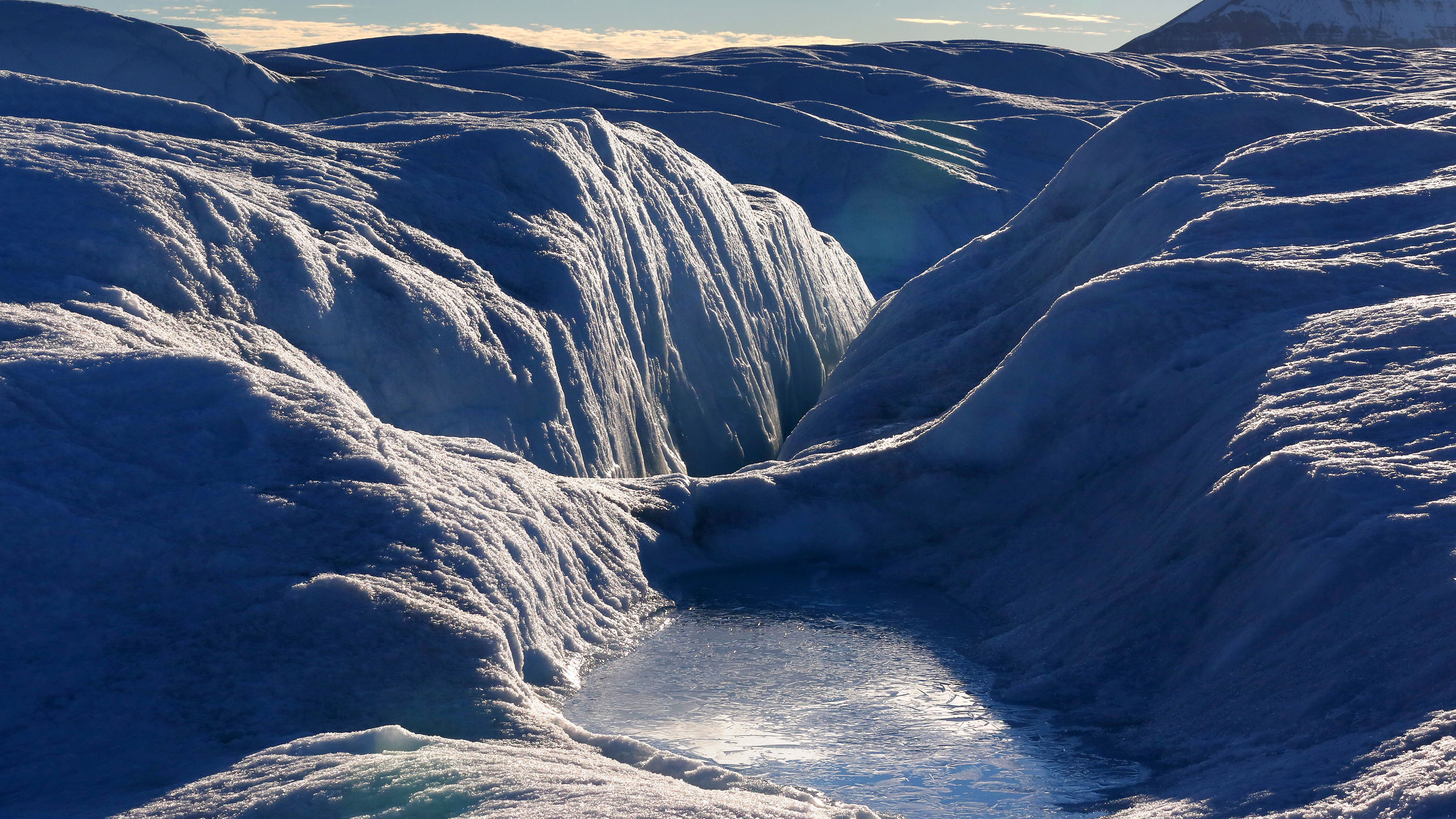Mysterious 'dark river' may flow hundreds of miles beneath Greenland

A giant underground river fed by melting ice could be running in a state of perpetual darkness far below the surface of Greenland, according to new research.
Nicknamed the 'Dark River', this hypothetical waterway – if it truly exists, that is – may stretch for 1,000 kilometers (620 miles), flowing from the deep interior of Greenland all the way to Petermann Fjord in the country's northwest.
"The results are consistent with a long subglacial river," says ice sheet modeler Christopher Chambers from Hokkaido University in Japan, "but considerable uncertainty remains."
That uncertainty largely stems from significant gaps in radar data from aerial surveys above the Greenland ice sheet, which have over the years detected fragmented glimpses of what looks like a giant, subglacial valley system extending below large parts of Greenland.
Numerous studies in the past couple of decades have suggested such trenches, valleys, or "mega-canyons" could lie hidden in the subglacial environment, and have also floated the idea that liquid water might flow at the bottom of the features.
However, due to gaps in the data – given the sparsity of airborne flights mapping these deep contours – it's not known if all the valleys are connected in one long, snaking river, or merely segments of disconnected phenomena, let alone how water might behave down there.
"We don't know how much water, if any, is available to flow along the valley, and if it does indeed exit at Petermann Fjord or is refrozen, or escapes the valley, along the way," Chambers says.
Get the world’s most fascinating discoveries delivered straight to your inbox.
In a new study, designed as a 'thought experiment', Chambers and his team explored the hypothetical possibility that the valley isn't broken up into separate pieces, but runs continuously in one long river.
Such a possibility is plausible, they say, given the segmentation seen in modeling before now might be an illusion – phantom elevations resulting from misleading modeling in data-sparse regions, rather than territorial features.
"The rises occur where data are interpolated to fill in gaps between where radar has obtained reliable data," the authors write in their new paper. "This suggests that the valley rises may not be real."
In the new modeling, the researchers assumed the Dark River is indeed a continuous feature. Based on that scenario, the simulations suggested the waterway flows from the centre of Greenland out to the sea, with liquid water traversing the uninterrupted pathway.
"Along its length, the path of the valley progresses gradually down an ice surface slope, causing a lowering of ice overburden pressure that could enable water flow along its path," the team writes.
While the findings remain hypothetical for now, the researchers think that future aerial surveys might one day be able to confirm the simulations.
If so, it wouldn't just tell us the Dark River is real, but would also mean we've reached a new level of being able to model the behavior of the Greenland ice sheet – a hugely complex and mysterious body predicted to have a vast impact on future sea level rise.
The findings are reported in The Cryosphere.
This article was originally published by ScienceAlert. Read the original article here.

Peter Dockrill is the Deputy Editor of ScienceAlert. With a background in law and technology journalism, Peter's work has appeared in APC, TechLife, PC User, Money, The Laws of Australia, and The Newcastle Law Review. Peter's science reporting was featured in "The Best Australian Science Writing 2018" anthology. He won most entertaining writer at the Consensus IT Writers Awards, and he was a finalist at the Australian IT Journo Awards. When not working, Peter likes spending time with friends, cooking, and making music. He lives in Newcastle, Australia with his wife, their two lovely daughters and a dog called Belle.


